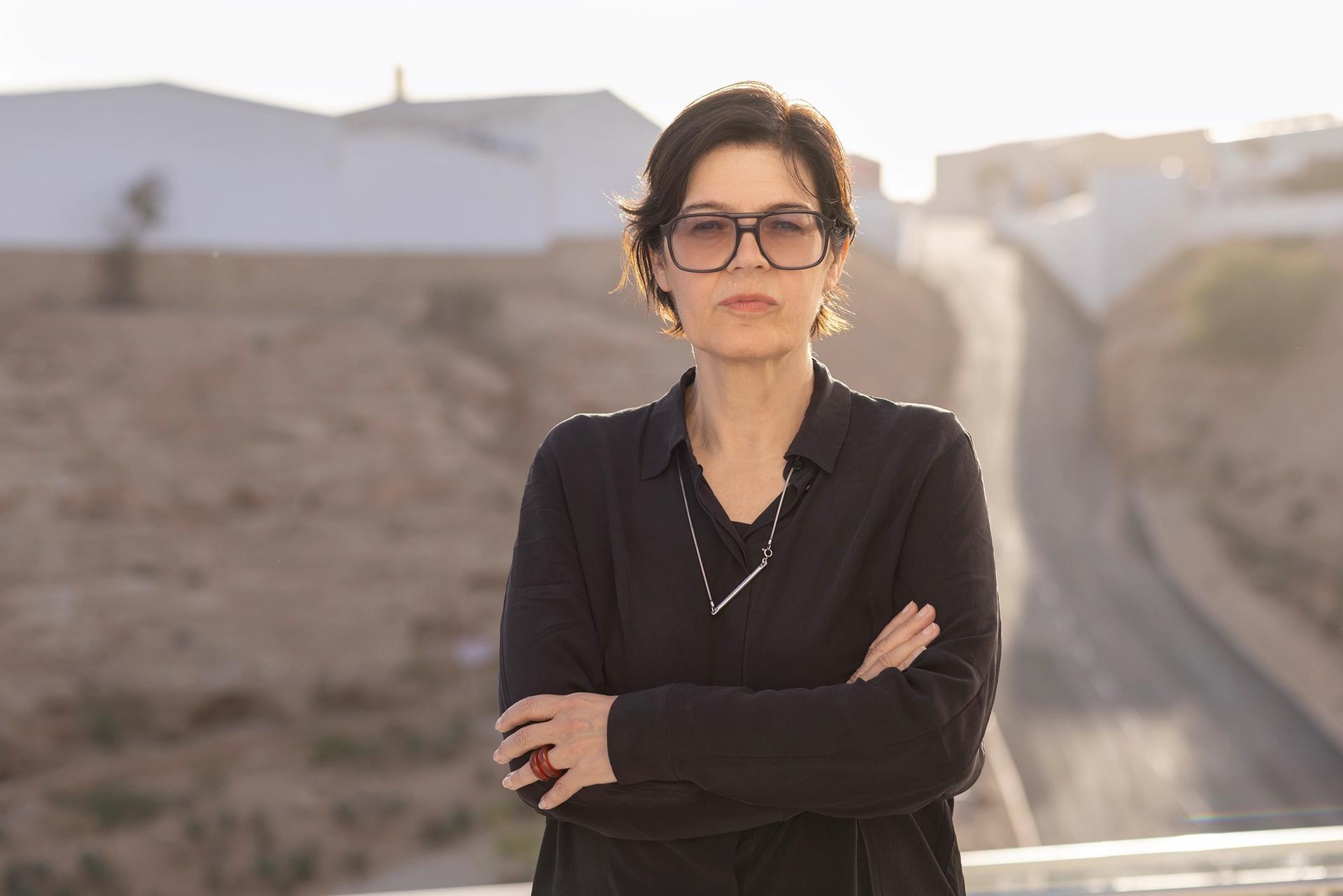Towers of soaps inscribed with emotive words, an elevated stilt house standing in isolation, a colourful embroidered map marking global migration and ensembles of mangrove plants calmly sliding in and out of water. These are just some of the 177 conceptual art installations that are being shown at the second edition of the Diriyah Biennale, which is taking place in the Saudi Arabian capital of Riyadh.
Running until May 24, the biennale's title After Rain refers to a sense of growth and revitalisation and was inspired by a particular earthy smell that emerges from dry soil after a downpour, "petrichor". The theme of this year's exhibition is land, its natural resources, its inhabitants and the environmental concerns, such as rising sea and heat levels, they collectively face. A total of 100 multidisciplinary artists, delving into textiles, film, performance, painting, sculpture and crafts, from 43 countries are taking part.

Portrait of curator Ute Meta Bauer
Photo: Christine Fenzl
“We live in an environment that is challenged by climate change. Food, water and shelter are precious for so many in this moment in time. Many don’t have it,” the biennale's artistic director, Stuttgart-born curator and university professor Ute Meta Bauer tells The Art Newspaper. "We see the conflict but we don’t see the real reason behind it and very often it is about access to basic needs. I wanted to show this but in a more subtle, less journalistic way, and through the language of artists."
Spanning an exhibition space of 12,900 square meters in six airy exhibition halls, the event is located in the JAX District, a warehouse-units-turned-arts-hub. Many works are anything but 'subtle' in terms of scale. They are in fact, monumental.

Detail from El Anatsui's Logoligi Logarithm (2019)
Photo by Alessandro Brasile, Courtesy of the Diriyah Biennale Foundation
Take for instance the notable Ghanian artist El Anatsui, who recently exhibited an enormous hanging piece at the Turbine Hall in London's Tate Modern. At the biennale, he is presenting a stand-out, maze-like installation, made of curtains of hundreds of stitched bottle caps. It is both physically and metaphorically a multi-layered work, addressing the themes of colonial imports, consumption and waste. The piece is named "Logoligi Logarithm," where 'logoligi' means snake-like in the Ghanian language of Ga.
In another dimly-lit room, five enlarged types of water containers, resembling landmarks, glow in the dark. The sculptures have been conceived by the Kuwaiti-Puerto Rican sculptor and filmmaker Alia Farid and began as the series In Lieu Of What Is in 2019 on the Iraq-Kuwait border. "Their reflective, glass-like surfaces radiate a fragility that invokes the complexities of freshwater resources in Kuwait," according to a text published by the biennale.
The sculptural work is accompanied by a film called “Chibayish” (a town of wetlands in southern Iraq), where Farid documents her interactions with three boys from the marshlands, describing their way of life while caring for a water buffalo. In recent years, media reports have indicated that the these vulnerable marshlands are drying and suffering from drought and decades-long political instability.

Foreground: Alia Farid's In Lieu of What Was (2019)
Photo by Marco Cappellettii, courtesy of Diriyah Biennale Foundation
For Bauer, the aim was for the show to be a flowing, emotionally-engaging experience where the works do all the talking. "It’s still a new experience for the population and I really wanted to make a show that is understandable, where people can experience and don’t need to read long wall texts. You don’t need to have studied art history to understand if a work of art is impactful," she adds. "I had to convince the biennale not to build walls. I wanted to have an open space, determined by the artworks."
The Diriyah Biennale is just one of many cultural projects that has been recently launched in different parts of the Kingdom, as part of an overall plan to develop a domestic art scene. “I really hope it’s not just seen as a commercial entity," says Bauer of the country's cultural expansion. "I really hope that the deep value of art is seen as something invaluable and not just linked to a market. I’m not against the market; artists have to live and survive, but I really wish they see art as part of life.”


![Installation view of Diriyah Biennale. Centre: Tiffany Chung's Energy Policy vol.166: potential CO2 emissions until 2050 by key fossil fuel and coal extraction projects [each>1 Gt] worldwide (2023)
Photo by Marco Cappellletti, Courtesy of the Diriyah Biennale Foundation](https://cdn.sanity.io/images/cxgd3urn/production/470c31bbca24038bd56881d3fb24b41d63a6f83a-9310x6206.jpg?rect=1,0,9309,6206&w=1200&h=800&fit=crop&auto=format)